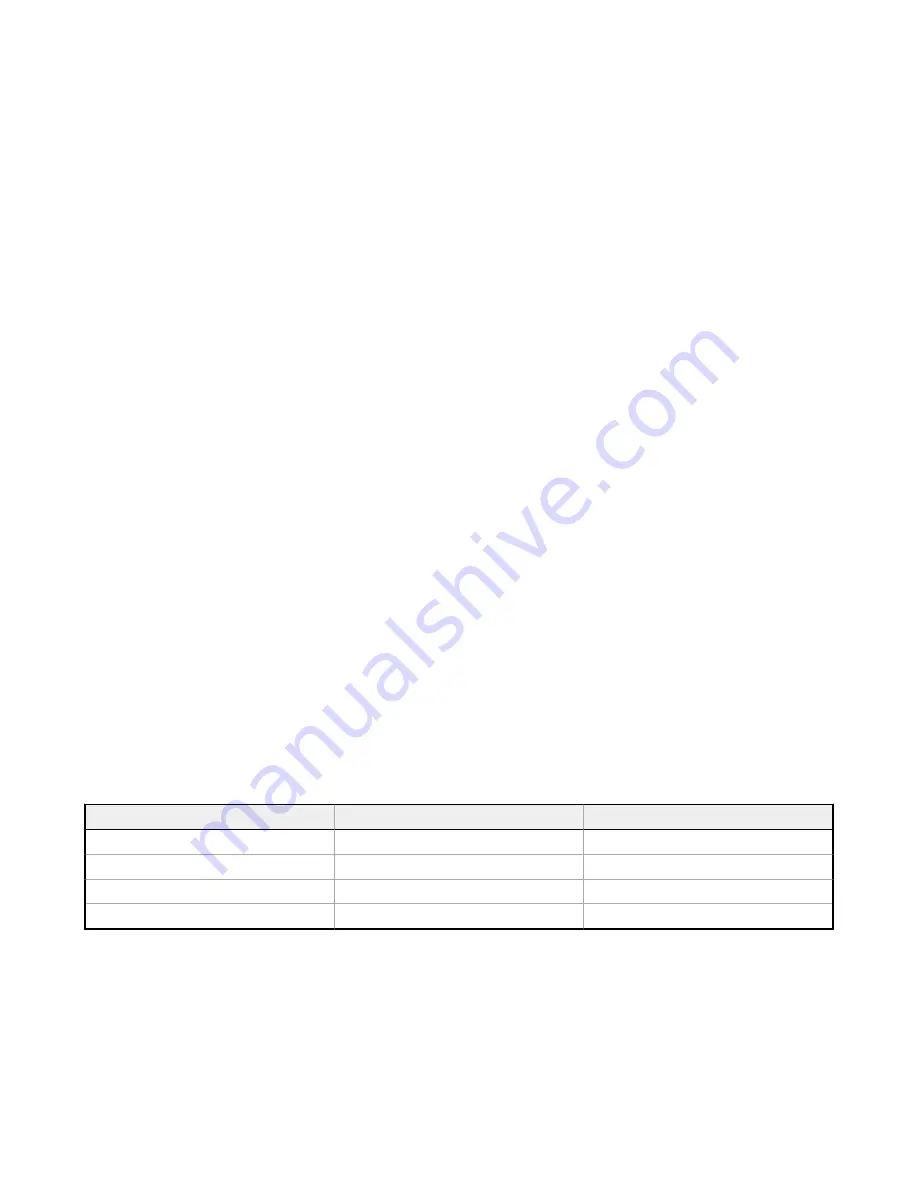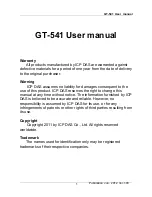
6.4.2 FCC Certification, 2.4GHz
The DX80 Module complies with Part 15 of the FCC rules and regulations.
FCC ID: UE300DX80-2400 This device complies with Part 15 of the FCC Rules. Operation is subject to the following two
conditions: (1) this device may not cause harmful interference, and (2) this device must accept any interference received,
including interference that may cause undesired operation.
6.4.2 FCC Notices
IMPORTANT: The DX80 Modules have been certified by the FCC for use with other products without any further
certification (as per FCC section 2.1091). Changes or modifications not expressly approved by the manufacturer could void
the user’s authority to operate the equipment.
IMPORTANT: The DX80 Modules have been certified for fixed base station and mobile applications. If modules will be used
for portable applications, the device must undergo SAR testing.
IMPORTANT: If integrated into another product, the FCC ID label must be visible through a window on the final device or it
must be visible when an access panel, door, or cover is easily removed. If not, a second label must be placed on the
outside of the final device that contains the following text: Contains FCC ID: UE300DX80-2400.
6.4.2 Note
This equipment has been tested and found to comply with the limits for a Class B digital device, pursuant to Part 15 of the
FCC Rules. These limits are designed to provide reasonable protection against harmful interference in a residential
installation. This equipment generates, uses, and can radiate radio frequency energy and, if not installed and used in
accordance with the instructions, may cause harmful interference to radio communications. However, there is no guarantee
that interference will not occur in a particular installation. If this equipment does cause harmful interference to radio or
television reception, which can be determined by turning the equipment off and on, the user is encouraged to try to correct
the interference by one or more of the following measures:
• Reorient or relocate the receiving antenna,
• Increase the separation between the equipment and receiving module,
• Connect the equipment into an outlet on a circuit different from that to which the receiving module is connected,
and/or
• Consult the dealer or an experienced radio/TV technician for help.
Antenna Warning: This device has been tested with Reverse Polarity SMA connectors with the antennas listed in
page 56. When integrated into OEM products, fixed antennas require installation preventing end-users from replacing
them with non-approved antennas. Antennas not listed in the tables must be tested to comply with FCC Section 15.203
(unique antenna connectors) and Section 15.247 (emissions).
6.4.2 FCC Approved Antennas
WARNING: This equipment is approved only for mobile and base station transmitting devices. Antenna(s) used for this
transmitter must be installed to provide a separation distance of at least 20 cm from all persons and must not be collocated
or operating in conjunction with any other antenna or transmitter.
DX80 Module may be used only with Approved Antennas that have been tested with this module.
Table 3: Certified Antennas for 2.4 GHz
Model
Antenna Type
Maximum Gain
Integral antenna
Unity gain
BWA-2O2-C
Omni, 1/2 wave dipole, Swivel
≤2 dBi
BWA-2O5-C
Omni, Collinear, Swivel
≤5 dBi
BWA-2O7-C
Omni, Coaxial Sleeve, Swivel
≤7 dBi
6.4.3 Exporting Sure Cross
®
Radios
Exporting Sure Cross
®
Radios. It is our intent to fully comply with all national and regional regulations regarding radio frequency emissions. Customers who want to re-export
this product to a country other than that to which it was sold must ensure the device is approved in the destination country. The Sure Cross wireless products were certified
for use in these countries using the antenna that ships with the product. When using other antennas, verify you are not exceeding the transmit power levels allowed by local
governing agencies. This device has been designed to operate with the antennas listed on Banner Engineering’s website and having a maximum gain of 9 dBm. Antennas not
included in this list or having a gain greater that 9 dBm are strictly prohibited for use with this device. The required antenna impedance is 50 ohms. To reduce potential radio
interference to other users, the antenna type and its gain should be so chosen such that the equivalent isotropically radiated power (EIRP) is not more than that permitted for
successful communication. Consult with Banner Engineering Corp. if the destination country is not on this list.
Sure Cross
®
Performance DX80 Wireless I/O Networks
56
www.bannerengineering.com - Tel: + 1 888 373 6767














































